The Ultimate Guide to Successful Brand Development: Essential Steps and Strategies
Imagine building a business that stands out in a crowded market, connects emotionally with customers, and ensures long-term success. That’s the power of effective brand development. In this blog post, you’ll discover the essential steps and strategies for creating a strong brand identity, from mission and vision to ongoing brand management. By the end, you’ll have a comprehensive understanding of the brand development process and how to apply it to your own business.
Key Takeaways
- Brand development is essential for long-term success, and should include mission, vision, values & more.
- Crafting a strong brand identity involves research & analysis to understand the target audience and competitive positioning.
- Implementing an effective strategy requires collaboration with experts and ongoing management to ensure successful performance.
The Importance of Brand Development
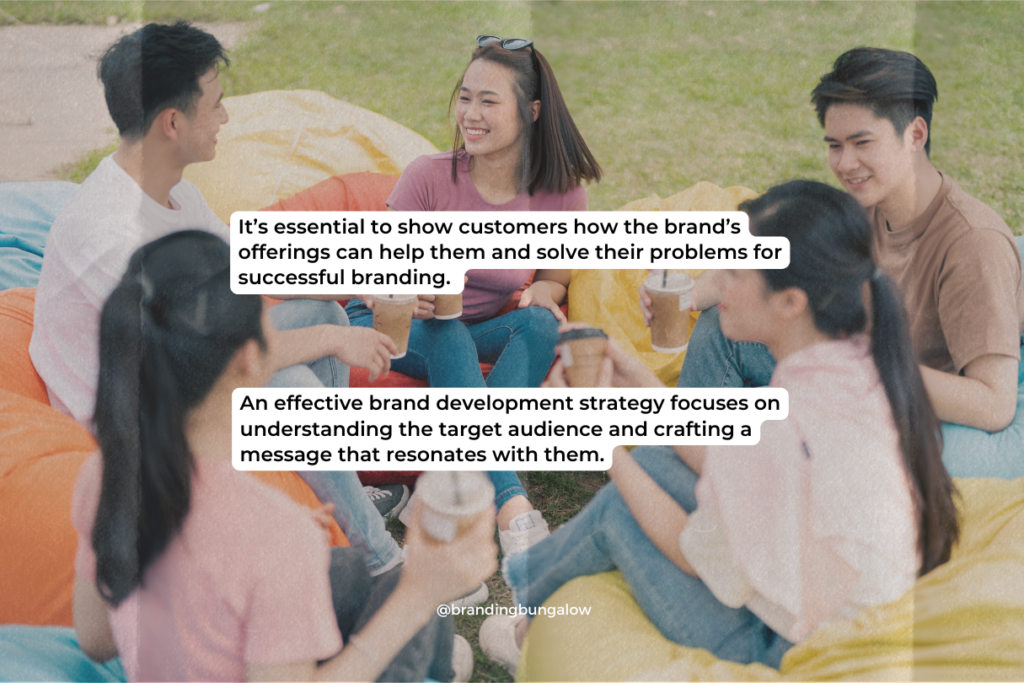
Long-term success hinges on a well-defined brand strategy. It helps create emotional connections with customers, leading to higher lifetime value and loyalty. But how do you develop a brand that resonates with your target audience? The secret lies in combining creativity and rational thinking to create a new brand identity that sets you apart from the competition and increases market share and revenue.
Across a business, consistent branding creates a unified experience for customers when they interact with the brand. This consistency is achieved by using brand elements like logo, colors, and typography throughout the business. It’s essential to show customers how the brand’s offerings can help them and solve their problems for successful branding. An effective brand development strategy focuses on understanding the target audience and crafting a message that resonates with them.
Key Elements of a Comprehensive Brand Strategy
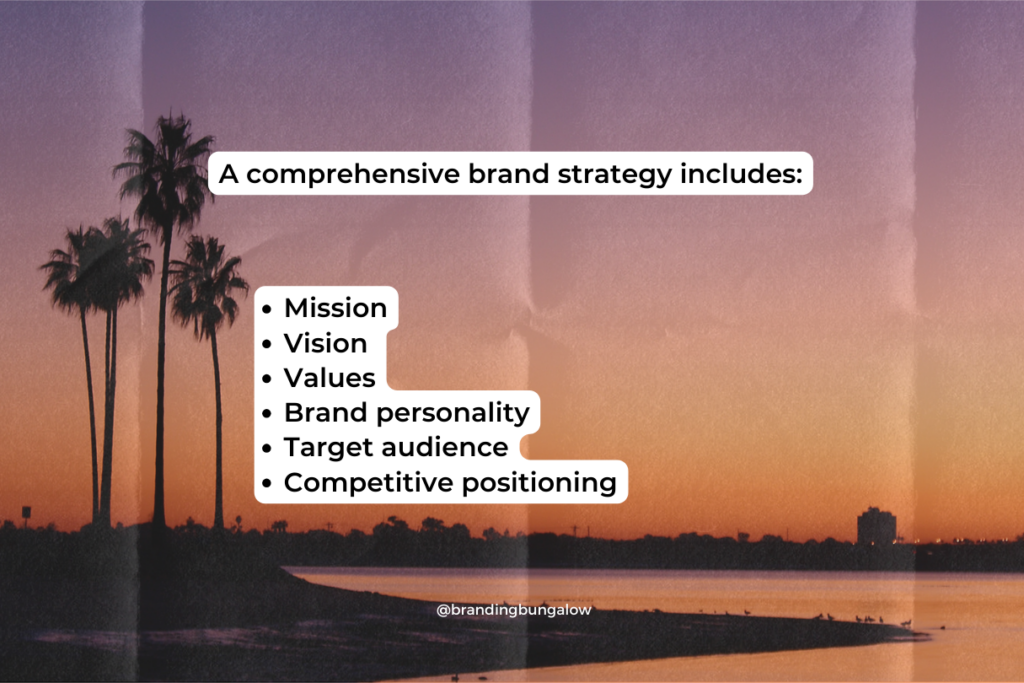
A comprehensive brand strategy includes:
- Mission
- Vision
- Values
- Brand personality
- Target audience
- Competitive positioning
These elements come together to create a unique and meaningful brand that stands out in the market. When defining a brand, consider its purpose, the values it stands for, and its desired position in the market. Focusing on these key elements ensures that your brand can connect with its audience and leave lasting impressions.
Developing a powerful brand identity requires strategic thinking, creativity, and a clear understanding of your target audience. Achieving brand recognition is essential in linking what matters to the business with what’s important to the customers. This includes creating a unique name, logo, and tagline that represent the essence of your brand. Getting the message right enables your brand to evoke emotion and action, build loyalty, and remain memorable.
Mission and Vision
Successful brand strategies heavily rely upon mission and vision statements. They provide direction and purpose for a brand, guiding its actions and decisions. For instance, LEGO’s mission is to inspire and nurture the builders of tomorrow. A strong mission and vision not only set the foundation for a brand’s identity but also help in achieving its business objectives.
Another example is TOMS, a brand with a mission to make a positive difference in people’s lives. Their One for One program, where they donated shoes to kids in need, earned them a strong reputation as a social enterprise. As a brand evolves, its story can grow and develop, moving beyond its initial mission or values, like TOMS did, donating a third of its profits to local organizations committed to creating sustainable change.
Values and Brand Personality
The uniqueness of a brand and its ability to stand out rests on its brand values and personality. They shape the brand’s image and guide the way it communicates with its audience. For example, some brands with strong personalities that set them apart from their competitors are:
- Harley Davidson
- Red Bull
- Alfa Romeo
- Coca-Cola
Creating a brand voice and tone is critical, as it defines the brand’s identity and facilitates communication with its audience. Telesign, for instance, revamped their brand message house, brand pillars, and overall brand messaging, taking data into account. Insights are essential for a creative team’s success, as they open up the problem and reveal new perspectives.
Target Audience and Competitive Positioning
Creating a distinctive and individual brand requires an understanding of the target audience and competitive positioning. Brand positioning involves figuring out how a firm stands out from the competition and why potential customers in the target market should pick them. Relevance to the target client audience is key for a successful brand.
Market research and competitive analysis play a crucial role in brand development, as they help brands figure out what makes them unique compared to other brands. For example, Coca-Cola’s brand is based on the idea of gathering friends to have fun, feel joy, and connect, resonating with its target audience.
A clear understanding of the target audience and competitive positioning enables a brand to craft effective marketing messages that drive brand growth.
The Branding Process: Step-by-Step Guide
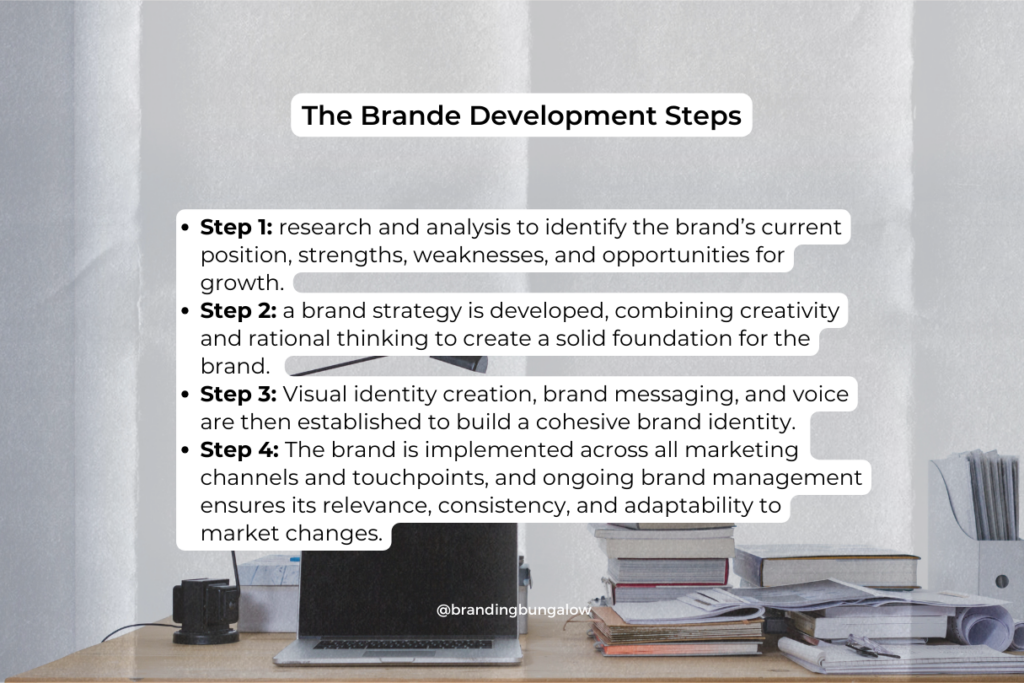
The branding process spans several stages: research and analysis, implementation, and ongoing management. Each step plays a critical role in creating a consistent and powerful brand presence that not only attracts customers but also fosters brand loyalty. A step-by-step approach ensures comprehensive and effective brand development efforts, fostering long-term success.
This process begins with research and analysis to identify the brand’s current position, strengths, weaknesses, and opportunities for growth. Next, a brand strategy is developed, combining creativity and rational thinking to create a solid foundation for the brand. Visual identity creation, brand messaging, and voice are then established to build a cohesive brand identity. Finally, the brand is implemented across all marketing channels and touchpoints, and ongoing brand management ensures its relevance, consistency, and adaptability to market changes.
Research and Analysis
In the brand research and analysis phase of branding, brand strategists conduct an in-depth analysis of the company and create a comprehensive, wide-ranging report. This process helps identify where the brand is now, what it does well, where it could use some improvement, and how it can grow. This phase necessitates avoiding common mistakes like deviating from your brand vision or failing to differentiate from competitors.
SWOT analysis, a popular research method, can be used to assess the brand’s:
- Strengths
- Weaknesses
- Opportunities
- Threats
This approach helps in identifying areas of improvement, understanding the competitive landscape, and creating strategies to boost the brand’s positioning and competitiveness in the market. Research and analysis lay the groundwork for a successful brand development strategy.
Brand Strategy Development
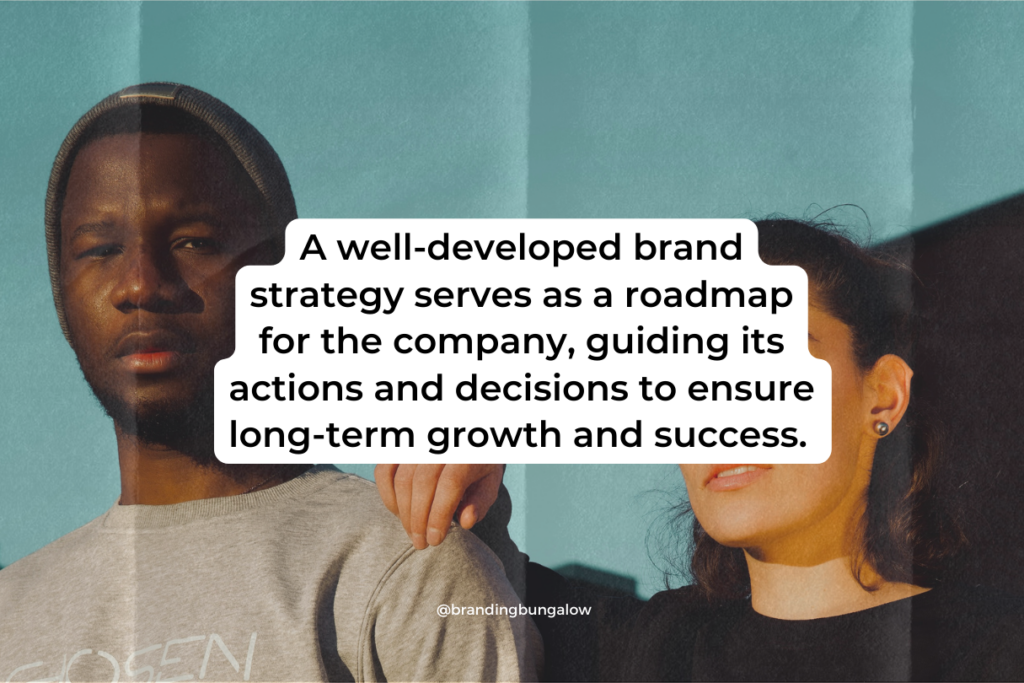
Developing a brand strategy involves:
- Taking the insights from research and analysis
- Creating a plan that aligns with the brand’s mission, vision, and values
- Focusing on the target audience and how the brand can connect with them on an emotional level
- Considering the brand’s competitive advantage in the market, ensuring it stands out from competitors
This stage requires a focus on the brand’s unique identity and its desired reputation. A well-developed brand strategy serves as a roadmap for the company, guiding its actions and decisions to ensure long-term growth and success. By staying true to the brand vision and understanding the target market, businesses can build a robust and effective brand development strategy, which includes a solid branding strategy as well as a coherent business strategy.
Visual Identity Creation
Visual identity creation involves designing a logo, selecting colors and fonts, and creating a cohesive look and feel across all touchpoints. A well-designed logo plays a vital role in representing the brand’s values and personality. Moreover, choosing the right colors and fonts helps convey the brand’s message effectively and create a consistent brand identity.
The creation of a visual identity demands accurate reflection of the personality and values outlined in the strategy. A strong visual identity not only makes a brand memorable but also builds trust and credibility with its target audience. By focusing on these aspects, businesses can create a powerful visual identity that resonates with their audience and supports the brand’s overall development.
Brand Messaging and Voice
Consistent brand messaging and voice are essential for aligning with the brand’s identity, values, and personality. Crafting a distinct brand voice helps define the brand’s identity and facilitates communication with its audience. For instance, Telesign revamped their brand message house, brand pillars, and overall brand messaging, taking data into account.
Brand messaging and voice are significantly shaped by insights. They reveal new perspectives and help create messaging that connects with the target audience. By focusing on these insights, businesses can ensure that their brand messaging evokes emotion, drives action, and builds loyalty among their customers.
Implementation and Integration
Once the brand identity, messaging, and voice have been established, it’s time for implementation and integration across all marketing channels and touchpoints. This involves applying the visual identity, messaging, and voice consistently throughout the brand’s online and offline presence. By doing so, businesses can create a unified and consistent brand experience that effectively conveys the brand’s message, values, and identity to the target audience.
Successful implementation and integration processes call for:
- Planning
- Strategizing
- Developing creative ideas
- Executing the strategic plan
- Maintaining agility
Involving the team and communicating strategic goals clearly can further enhance the effectiveness of this process. By putting the brand identity into action across all marketing channels and touchpoints, businesses can create a powerful brand presence that drives growth and customer loyalty.
Ongoing Brand Management
The key tasks in ongoing brand management include:
- Market analysis and research
- Formulating strategies
- Standardizing communication
- Monitoring and evaluating brand performance
- Managing brand identity and design
- Reinforcing brand goals and values at every touchpoint
The relevance, consistency, and adaptability of a brand to market changes hinge on these ongoing brand management tasks.
Measuring the success of brand development efforts involves tracking key performance indicators, such as brand awareness, sentiment, and customer loyalty. By monitoring these metrics, businesses can identify areas for improvement and make data-driven decisions to enhance their brand strategy.
Ongoing brand management includes the following key activities:
- Ensuring the brand stays up-to-date
- Maintaining consistency across all brand touchpoints
- Monitoring and responding to shifts in the market
- Evaluating and adjusting the brand development strategy as needed
These activities contribute to the overall success of the brand.
Building a Powerful Online Presence
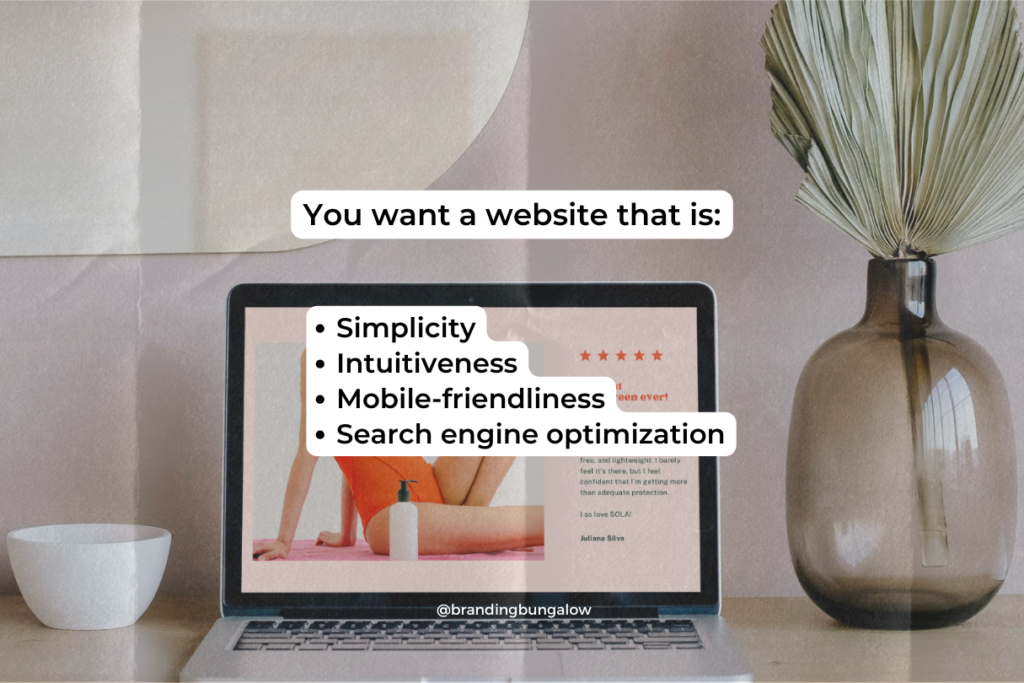
For modern brands in today’s digital age, a powerful online presence is indispensable. This includes website design, content marketing, and social media branding, all of which play a crucial role in connecting with the target audience and establishing credibility. A strong online presence not only helps build brand awareness but also fosters customer engagement and loyalty.
To achieve a powerful online presence, brands must focus on user experience, educational and engaging content, and consistent branding across social media platforms. By doing so, businesses can create an online presence that attracts and retains customers, ultimately driving growth and success.
Website Design and User Experience
Establishing credibility and attracting customers necessitates a well-designed website with a focus on user experience. It shows that the brand is professional, cares about its users, and prioritizes a seamless experience across all devices. A high-performance website not only helps get and keep potential customers but also plays a vital role in the overall brand development strategy.
Some key aspects of website design include:
- Simplicity
- Intuitiveness
- Mobile-friendliness
- Search engine optimization
By creating a website that offers a great user experience, businesses can build trust, boost engagement, and encourage visitors to explore and engage more with the brand’s online presence, ultimately contributing to the success of the brand’s digital marketing strategy.
Content Marketing Strategy
Building trust and brand loyalty with the target audience can be effectively achieved through content marketing. By providing valuable information that educates, entertains, or solves problems for the audience, businesses can foster a connection with their customers and position their brand as a trusted resource. This, in turn, helps drive customer engagement, brand advocacy, and long-term loyalty.
To develop an effective content marketing strategy, brands should focus on:
- Creating high-quality content that aligns with their brand identity, values, and messaging
- Consistently delivering valuable content through various marketing channels, such as blogs, videos, and social media posts
- Building a powerful online presence that drives growth and success
Social Media Branding
Social media branding allows brands to:
- Connect with their audience on a personal level
- Foster engagement and brand advocacy
- Create a consistent brand message, visual style, and voice across social media platforms
- Build a strong online presence that resonates with their target audience.
To effectively leverage social media for branding, businesses should focus on creating engaging content, responding to comments, and running contests or giveaways to boost audience interaction. By utilizing hashtags, engaging with influencers, and sharing user-generated content, brands can further enhance their social media presence and create meaningful connections with their audience.
Collaborating with Experts for Effective Brand Development

Businesses can develop effective brand strategies and ensure long-term success through collaboration with experts like branding agencies or consultants. These experts bring a wealth of experience and knowledge to the table, providing valuable insights and creative ideas that can elevate a brand’s development efforts.
Branding agencies typically offer a range of services, including:
- Creating brand identities
- Designing logos
- Crafting visual identities
- Developing brand messages
- Launching campaigns
- Creating graphics and content
By partnering with branding experts, businesses can tap into a pool of expertise and resources that can enhance their brand development strategies and drive growth.
Measuring the Success of Your Brand Development Efforts
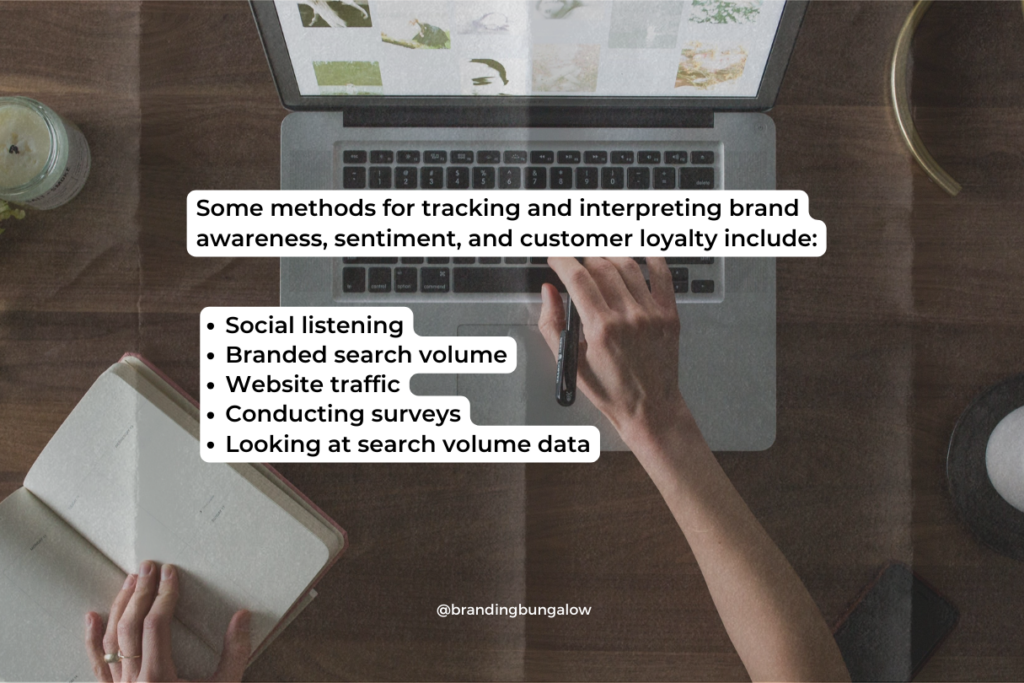
To identify areas of improvement and make data-driven decisions to enhance the brand strategy, measuring the success of brand development efforts is imperative. Some key performance indicators to track include brand awareness, sentiment, and customer loyalty. By monitoring these metrics, businesses can evaluate the effectiveness of their branding efforts and make necessary adjustments to stay on track.
Some methods for tracking and interpreting brand awareness, sentiment, and customer loyalty include:
- Social listening
- Branded search volume
- Website traffic
- Conducting surveys
- Looking at search volume data
By regularly measuring the success of their brand development efforts, businesses can ensure they maintain a consistent and powerful brand presence that drives growth and customer loyalty.
Case Studies: Successful Brand Development in Action
Successful brand development strategies can be found in various case studies, offering valuable insights for businesses looking to improve their own branding efforts. Some notable examples include:
These examples demonstrate the power of effective brand development in driving growth and success.
These case studies showcase the importance of creating a strong brand identity, connecting with the target audience, and staying adaptable in the face of market changes. By learning from these successful brands, businesses can gain valuable insights and ideas for their own brand development strategies and set themselves up for long-term success.
Common Challenges and Pitfalls in Brand Development
Brand development comes with its own set of challenges and pitfalls. Some common issues faced by businesses during brand development include:
- Rushing the process
- Neglecting research
- Sending out conflicting messages
- Not being able to keep up with the market
These mistakes can lead to an inconsistent brand with no clear message, ultimately hindering its growth and success.
To avoid these pitfalls, businesses must invest time and effort in research, stay true to their brand vision, and focus on building a consistent and powerful brand identity. By addressing these challenges and learning from the mistakes of others, businesses can set themselves up for long-term success in their brand development efforts.
Summary
In conclusion, effective brand development is crucial for long-term business success, emotional connections with customers, and increasing brand loyalty. By following a comprehensive brand strategy and step-by-step branding process, businesses can create a strong brand identity, build a powerful online presence, and collaborate with experts to ensure their brand remains relevant, consistent, and adaptable to market changes. By learning from successful case studies and avoiding common pitfalls, businesses can set themselves up for success in their brand development efforts and create a lasting impression in the minds of their customers.
Frequently Asked Questions
What are the 4 stages of brand development?
Brand development involves understanding and executing four key steps: Awareness, Relationship, Loyalty, and Advocacy. These stages help businesses create an engaging customer experience that enhances their brand identity.
What is an example of brand development?
An example of brand development is Apple’s “Think Different” campaign, which aimed to develop their brand image from the inside out, ensuring customer loyalty and brand awareness. Similarly, Starbucks’ idea of writing down customers’ names on coffee glasses was also a successful branding strategy.
What are the 7 steps in brand development process?
Developing a brand involves 7 steps: researching target audience and competitors, picking focus and personality, selecting business name, writing a slogan, choosing colors and fonts, designing a logo, and applying the branding across the business.
What are the essential elements of a comprehensive brand strategy?
A comprehensive brand strategy should encompass mission, vision, values, brand personality, target audience, and competitive positioning to effectively engage with customers.
How can businesses measure the success of their brand development efforts?
Measuring the success of brand development efforts can be done by tracking brand awareness, sentiment, and customer loyalty. This gives businesses an understanding of their effectiveness in creating a strong ide
Recent Blog Entries
Discounts to Dubsado CRM, Helcim Payment Processing and...
Brand audits can save your business' sinking marketing ship.
What's happening to Coke and what you can learn from it.
Shop Products
Create a personalize brand board by taking elements from our 3 signature brand board templates.